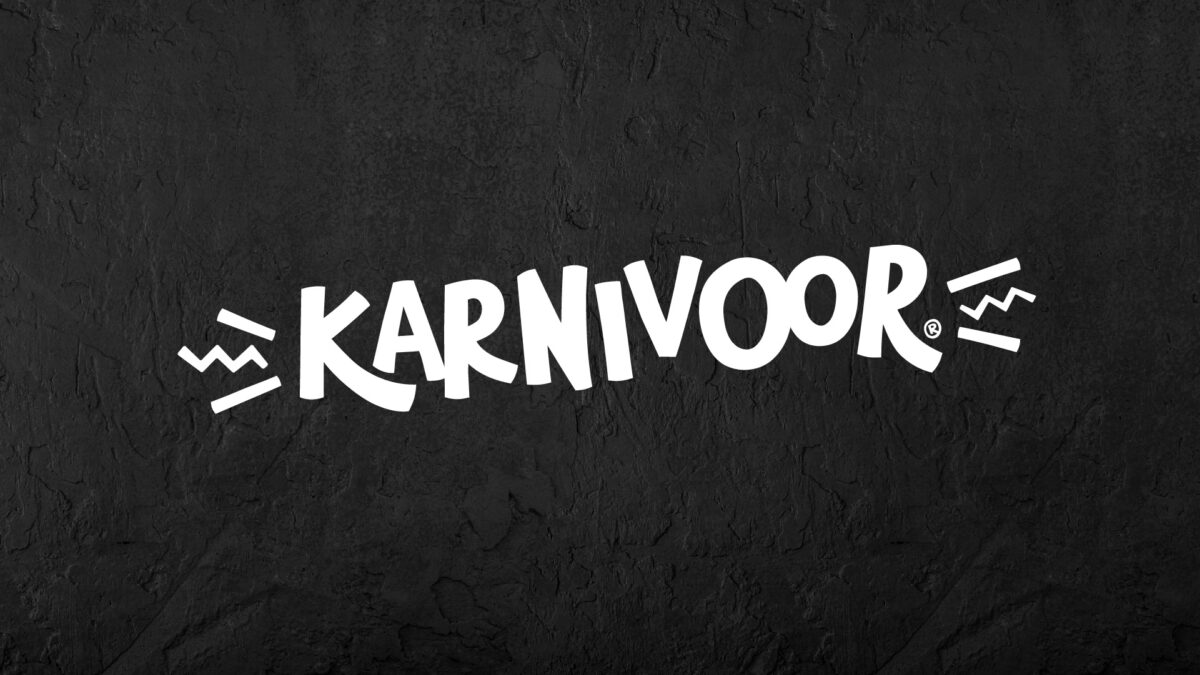How to Choose a Brand Name in 8 Steps
Your brand name represents your story, core values & is ultimately a key part of your identity that differentiates you from the other players in the market. An impactful brand name should be memorable, distinctive and enduring. As your first impression in market, this sets the tone for your business and lets customers know what to expect. With so many elements involved, it’s unsurprising that choosing a strong brand name often feels like a daunting task. So how do you choose the right brand name for your business, product or service? In this article, we demystify the brand naming process in eight simple steps that are suitable whether you are approaching a new brand, or a rebrand.
Characteristics of a Good Brand Name
A good brand name can build customer trust, establish identity and distinguish between companies and their competitors. Although there is no silver bullet solution to naming a brand, there are some common successful branding traits to keep top of mind during the process. Your brand name should be:
- Meaningful: it communicates your brand essence and hints at company stories, making it easier for customers to connect your values to your brand.
- Distinctive: it is unique and stands out within the competitive landscape.
- Accessible: it is easy to spell, remember, pronounce and Google (even if it is an unusual name).
- Visual: it can be translated through design, colours, icons and crafted into a well balanced logo.
- Concise: it is usually short. The shorter the name, the easier it is to spell, say, and remember. It also helps with URL and email length.
- Memorable: the best brand names are memorable in some way.
- Catchy: good names often have a certain ring to them, roll off the tongue easily & are pleasant sounding.
- Protectable: the name will need to be available to trademark and a suitable domain should be available.
- Flexible and enduring: you should foresee the name standing the test of time and futureproof.
- Culturally sensitive: free of negative meaning or connotations in major languages and cannot be shortened to suggest something offensive.

Common Brand Name Mistakes
Considering common brand naming issues can be just as critical in your decision making phase. More often than not, your brand name should avoid:
- Telling the whole story: a brand name cannot tell the whole story of your business in isolation. Customers will get the nature of your business from the brand name and the story will come later.
- Being too literal: it is advisable to avoid being too literal to avoid building a generic & less memorable brand. For instance, a removalist company called Moving Company wouldn’t stand out from the pack, while hearing or reading 2 Men and A Truck is more likely to stay top of mind. It is important to strike a balance between being literal enough to be quickly understood and also unique enough in your market.
- Being too long: long brand names are often forgotten, or misinterpreted. They are also difficult to Google.
- Being hard to spell/pronounce: avoid brand names that are difficult to spell or pronounce. This will make it easier for customers to find your business on and offline.
- Following a short term trend: choosing a name based on a short term trend may be tempting in the moment, however these types of brands can date quickly. Aim for a timeless name that will remain relevant for years to come.
- Being the same, or too similar to competitors: where possible, it is best to avoid selecting a brand name that is similar to another product or business. This can cause unnecessary intellectual property issues, as well as cause your brand to be mistaken for another by customers.
- Being culturally inappropriate or having an alternate meaning.

8 Step Brand Naming Process
Baring in mind the hallmarks of an impactful brand name (as well as potential missteps to avoid), this 8 step process will guide you through the journey of naming your brand.
1. Consider the purpose behind your name
Before we can dive into naming our brand, we need to consider the purpose of your brand. Take a step back and reflect on why your business exists and what impact you want to make on the world. Your name is often the short, sharp end of your brand that potential customers will see (and hopefully hear) about before anything else. Therefore, it is key that the purpose of your business shines through in the brand name that you choose. Ideally, your purpose should be an easy to remember and concise summary of your business.
2. Define your brand core
Now you’ve considered the purpose of your brand, the next step is to define your brand core. This isn’t just valuable for marketing, but it will help you align your entire business and get buy-in from both your potential customers and your future employees. Defining the core of your brand involves setting your values, culture and your mission.
A good starting place for inspiration on defining the core of your brand could be the creation of the company: what brought it about, why was it successful and what makes it unique? Within those questions you will find the core, the central essence of your business that can underpin all branding activity moving forward.
Finally, businesses with a clear mission perform better than those without, and if you have the core of your brand defined, you will not only gain a financial benefit – your brand will shine that much brighter amongst its competition as both your customers and employees buy into the values.
3. Define your brand identity
Now for the fun part! Your brand identity. There are many ways you can approach this, but the end state is always a compelling identity that is on proud display. If your brand core is your heart and soul, your brand identity is the smile and wave you give to the world.
Your brand identity should be the physical manifestation of the ‘personality’ of your brand. If you want – imagine your brand as a person and try to capture everything that makes that ‘person’ special. Are you a punchy and dynamic startup catering towards Gen Z? Or a serious and trustworthy legal advisory? Each of these will have a distinct brand identity that should be consistent, clear and compelling to the outside world.
4. Create a user persona
Your brand is now alive and you should have a clear picture of how your brand presents both internally and to the world around you. It’s now important to define user personas, to help you talk to your potential customers effectively.
Just as your own identity moulds depending on where you are and who you’re talking to – so too should your brand identity. Think of yourself at Christmas with the family compared with you in a job interview – they’re both you, just different. Clearly defined user personas will help your brand talk to its potential customers better.
You may only have one ‘persona’ and that’s fine too. But think about your future customers and their background – what challenges do they face? Who are they? How much time, money and effort do they have to spend or put into your offering? What will your brand do for them?

A great idea is to humanise your user personas – give them names, backgrounds and a little ‘story’. It might seem silly, but it has huge value. This will help you keep the customer in mind, and remind yourself that you’re going to be serving a real person when you go live.
5. Ideation & Brainstorming of Possible Brand Names
With the strategy down pat, we move into ideation phase. Ensure everyone who is part of this collaborative phase is across your purpose, brand core, brand identity & ideal customer. The goal from here is to accumulate a long list of potentially viable name ideas. This can be a fun creative session to run as a group, however can also be driven by an individual.
Think of as many words as possible, including thoughts, feelings, people, and aesthetics. Nothing is out of bounds at this stage. From that simple start you can use brainstorming tools and techniques to expand, or curtail your list into potential names. Aside from your imagination, consider using tools such as AI name generators. While brand name generators like Namelix, Brandroot, and Namium may not find the perfect name for your brand, they can certainly accelerate thought generation and stimulate ideas during the brainstorming process.
After documenting the initial names on paper, sticky notes, or your computer, begin creating a short list. Filter the list by selecting names that stand out and feel aligned with your core focus and values. Your list should be reviewed through a critical eye at this stage, considering brand strategy and the key that positively and negatively impact brand names. Shortlist down to 5-10 ideas to take through the vetting process.

6. Vet your brand name:
From here, make sure the shortlisted names are available and there are no trademark or domain ownership issues. You can check these online using popular domain registrar and The Australian Trademark Search Tool (ATMOSS), which has just launched a new handy tool which easily allows you to see any similar names. This is also the time to consult with a Trademark Lawyer, who can identify any possible trademarking issues like similarity in a trademarked name, or a name that is pending registration.
7. Test your ideas:
Now it’s time to test your brand name ideas and see how they resonate with your audience. It’s easy to talk to your closest friends and family and they may give you some good feedback, but they might not always represent your target audience.
To get an understanding of your brand name and if it resonates with your target audience, it’s best to run some surveys, market research or focus groups. The purpose of this research is to ensure we meet the characteristics of a good brand name and to confirm our brand name aligns with our brand purpose and values in the eyes of our potential customers. Useful questions could be ‘How unique is this name?’ and ‘What adjectives come to mind when you see this brand?’ By following this process, you will be able to uncover the brand name that truly captures your brand’s purpose and your target audience’s attention.
8. Decide on the final name:
With research in mind on the viable name options, it is time to decide on your official brand name! Follow your intuition knowing what brand name best aligns with your core values and identity. This brand name should now fully reflect your business and support future success.
What Difference Does a Brand Name Make?
If it wasn’t already clear enough – a brand name is supremely important to your business. Your customers have to say it, read it, hear it – and so do your employees. Most of your marketing will reference the brand name. If you are successful as a business, it will be repeated hundreds and thousands of times out there in the real world. Don’t make it an afterthought!
Ultimately, a brand name is not only the foundation of your business, it can also be a key contributor to driving your success. The ‘wrong’ name can be a costly mistake to fix once your business grows and your branding is out there in the world. And, in future, if you are big enough to go global, the name you choose can make (or break) your business as it is translated (or mis-translated!) into different markets.